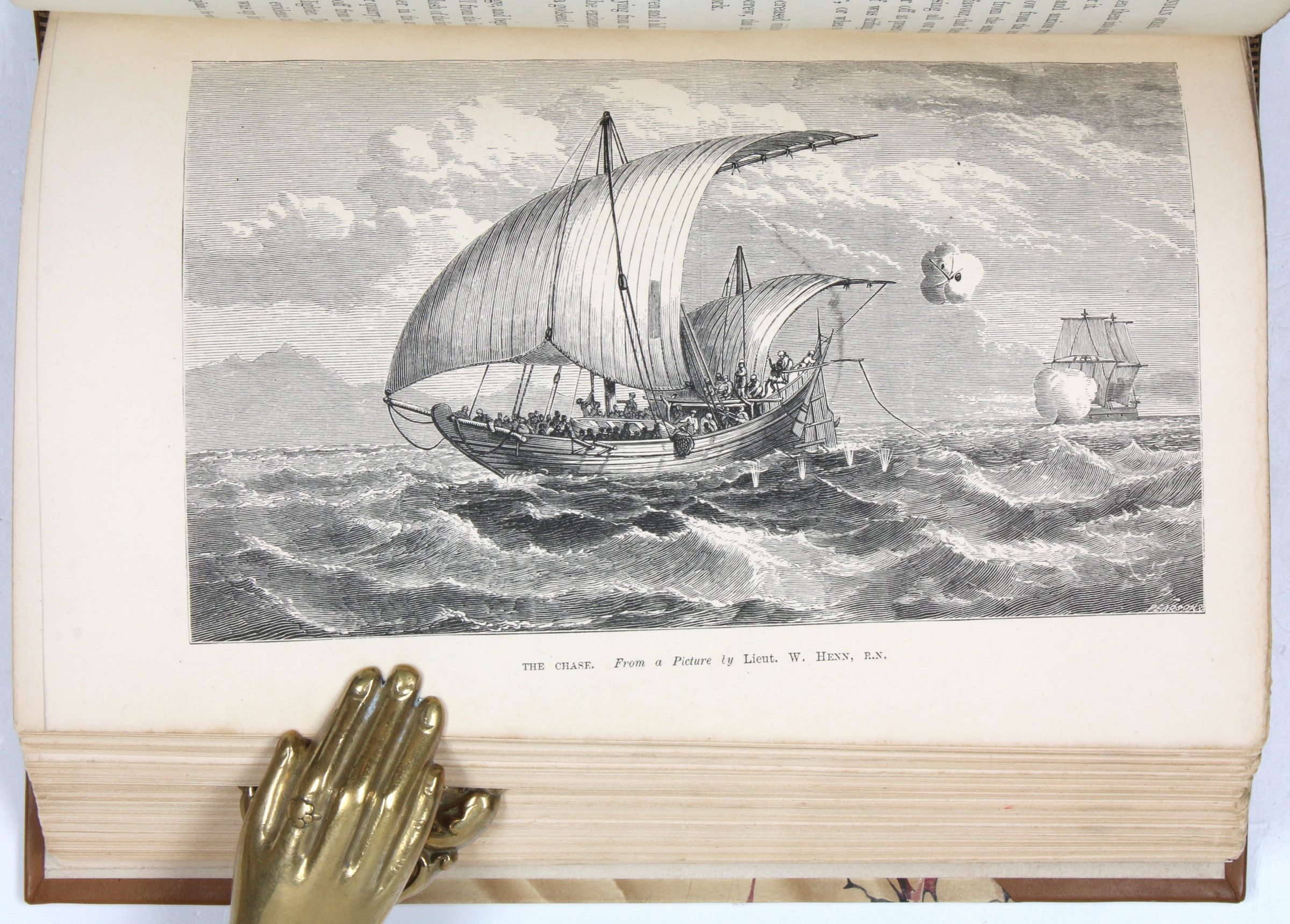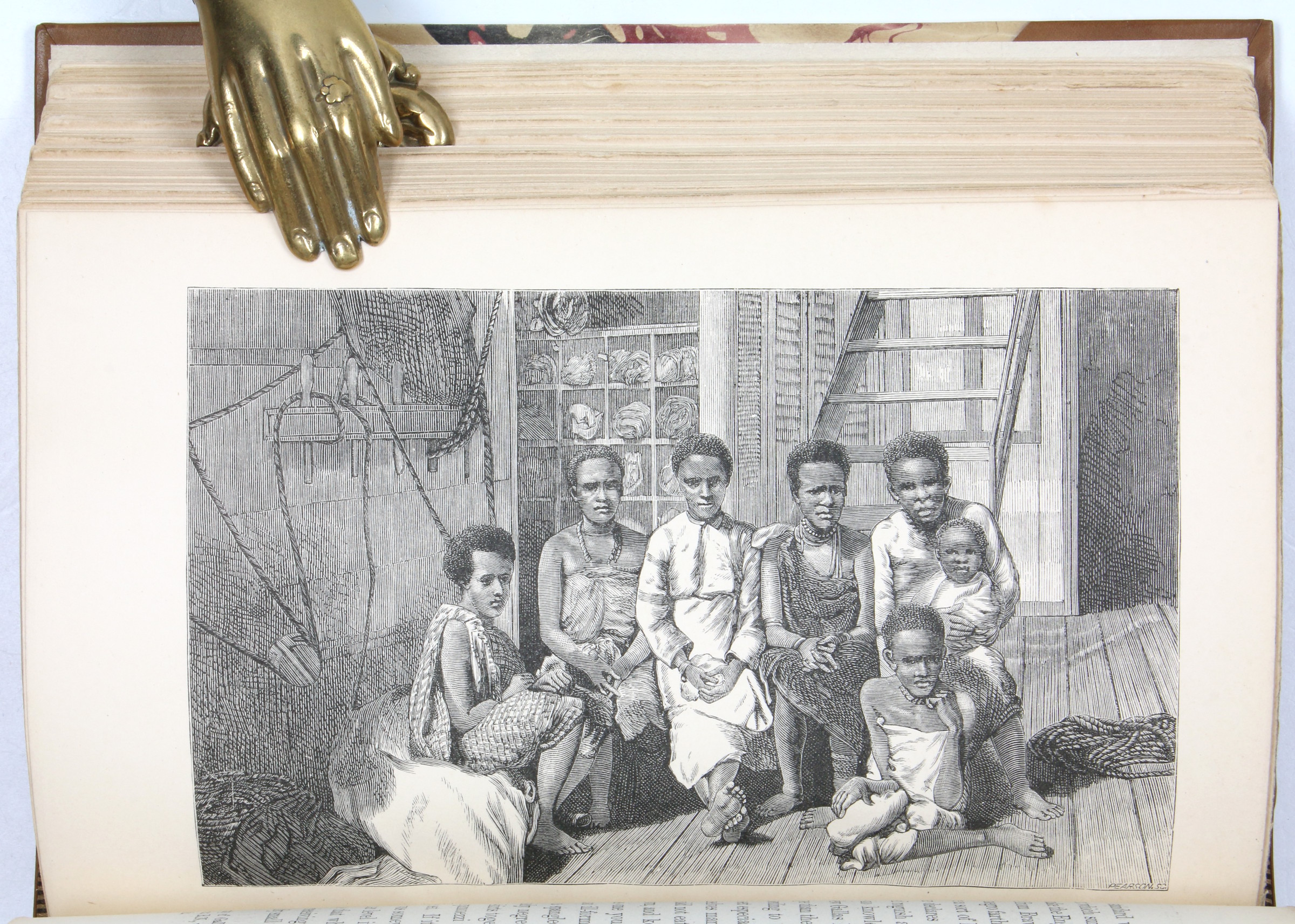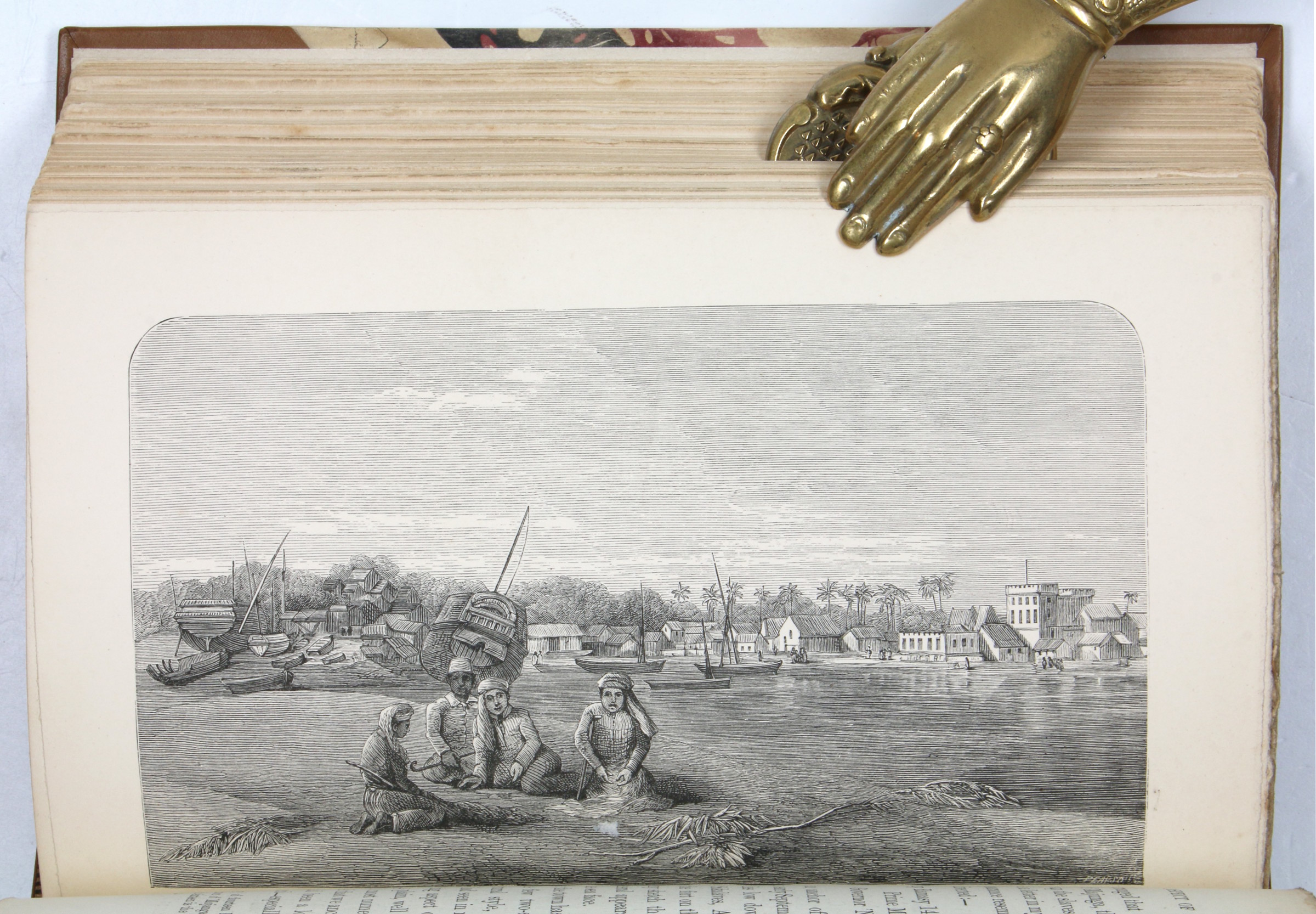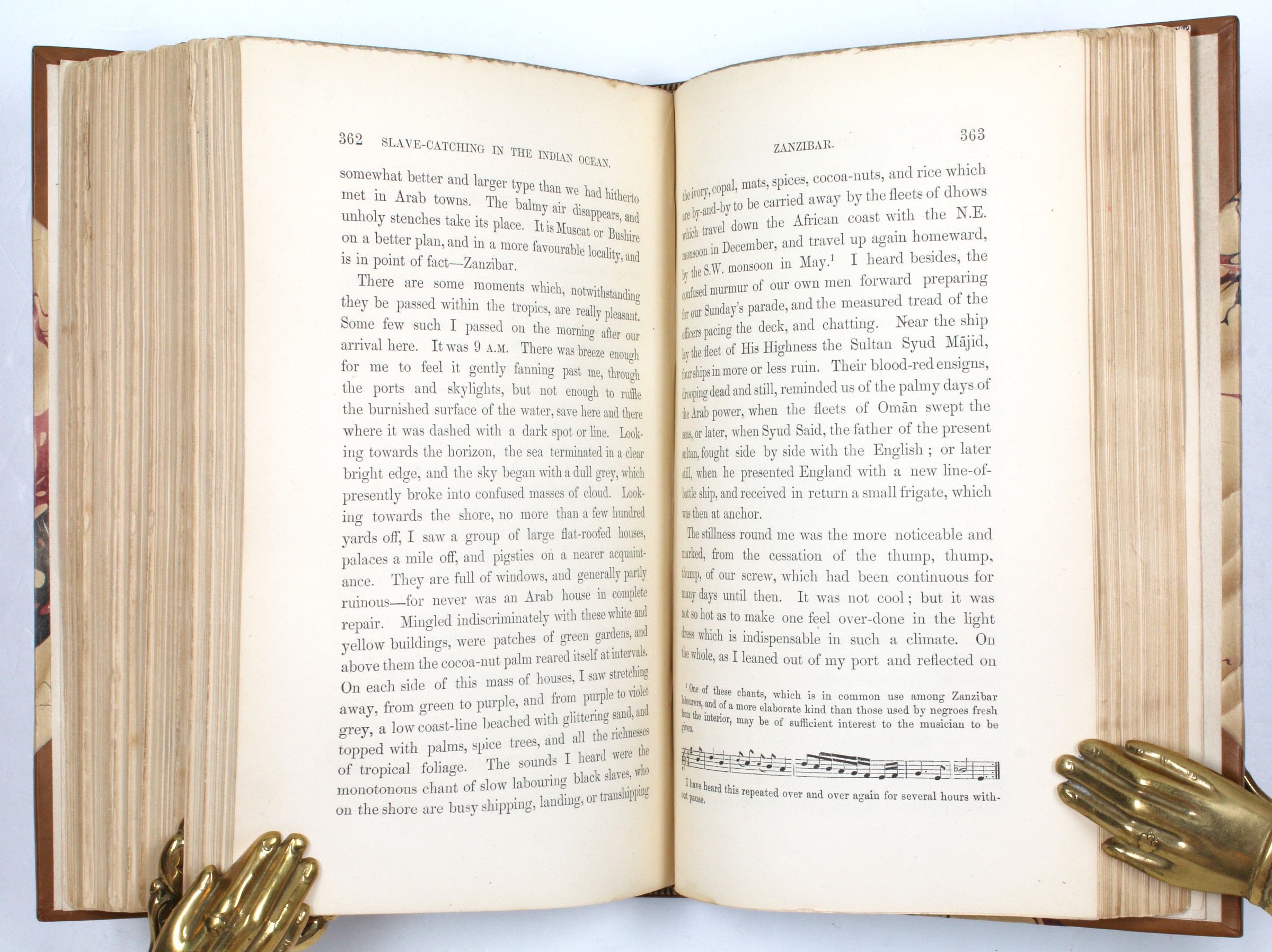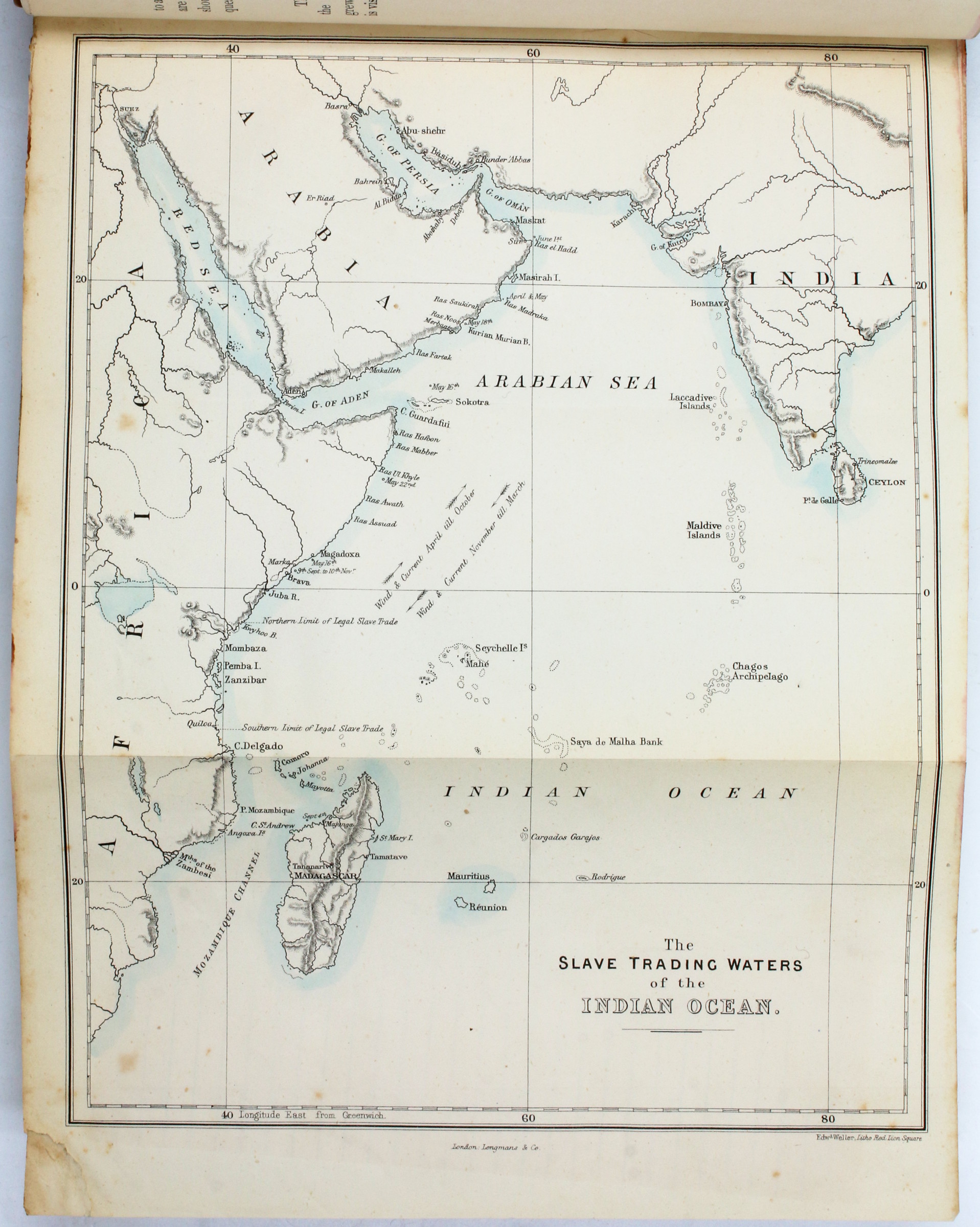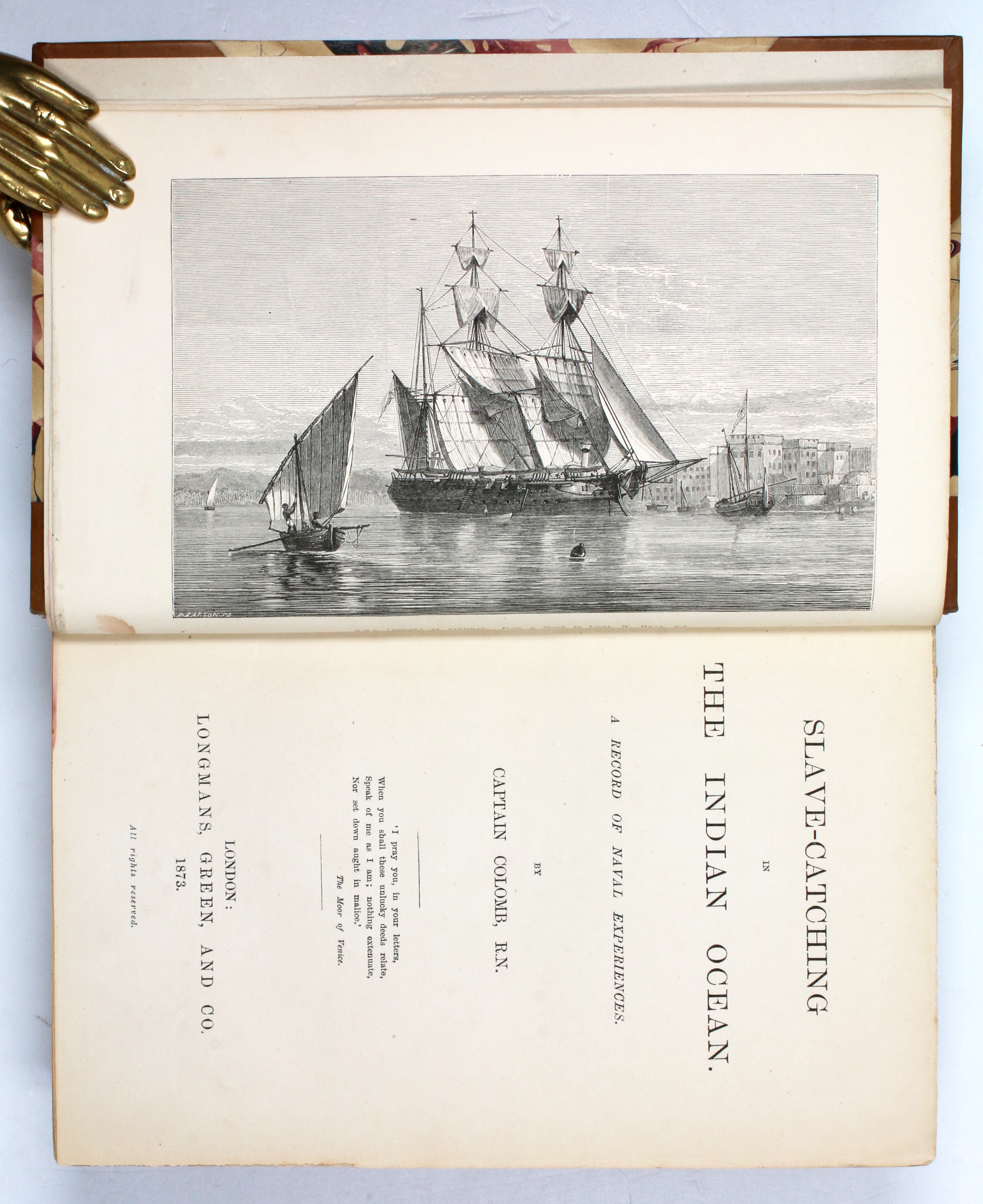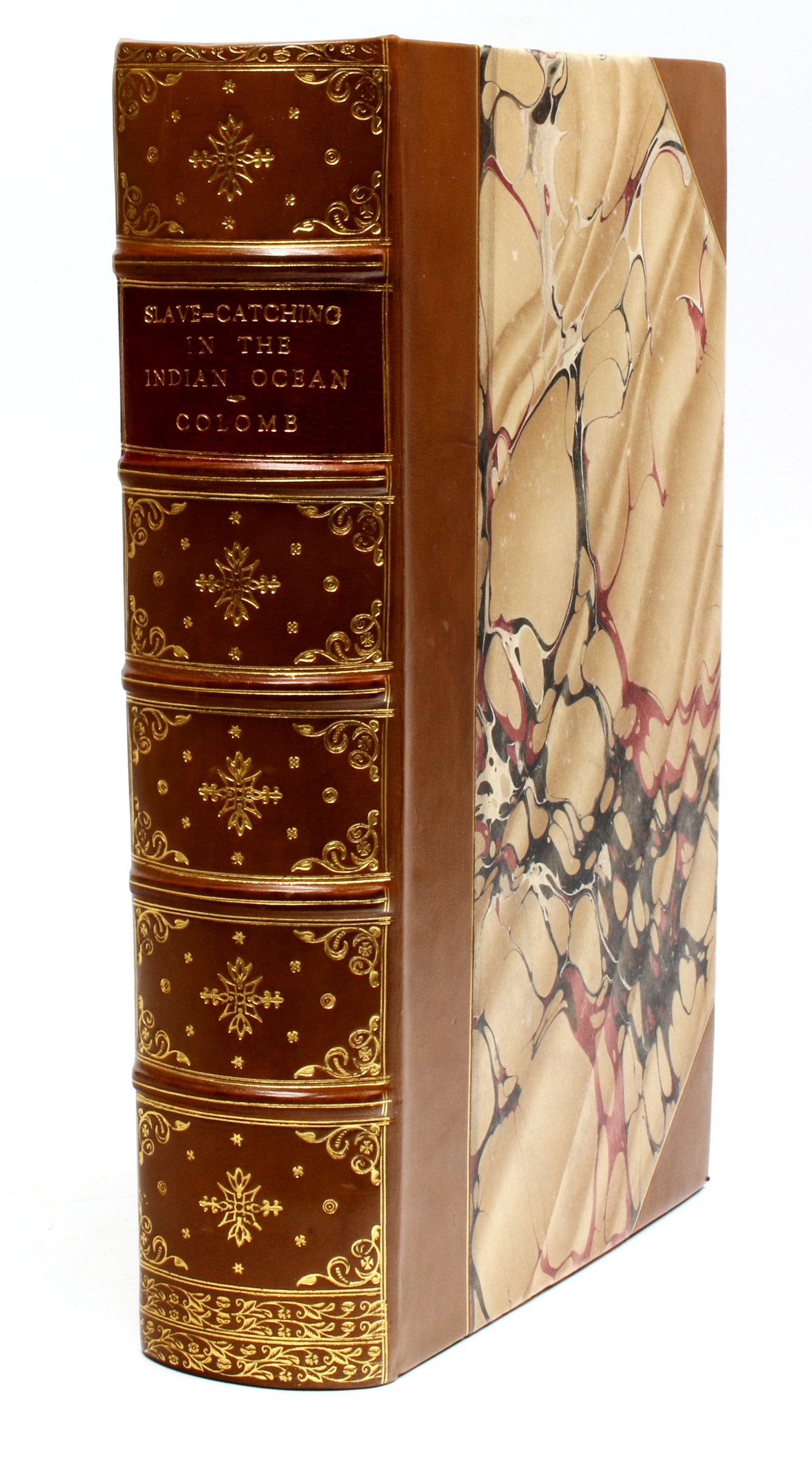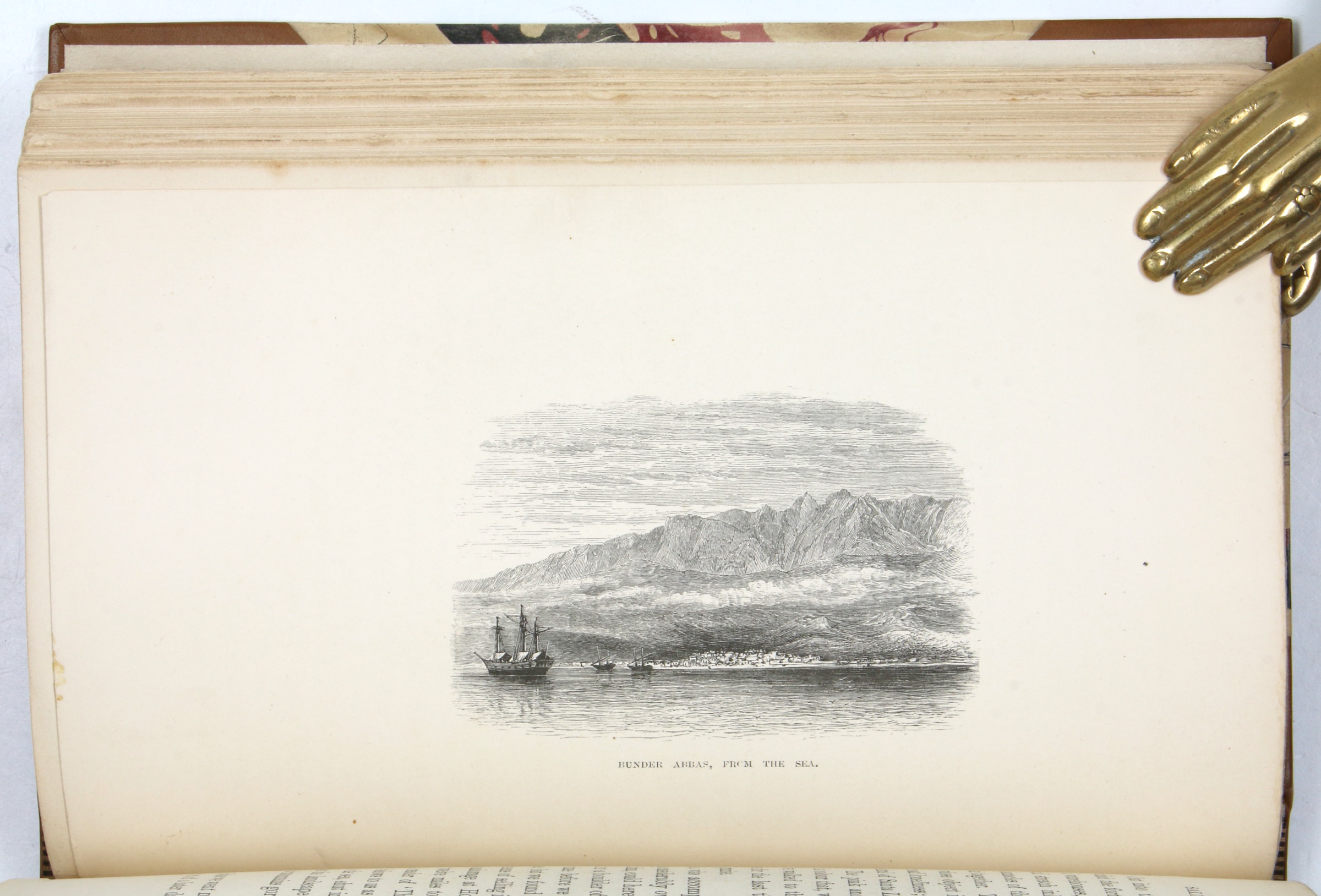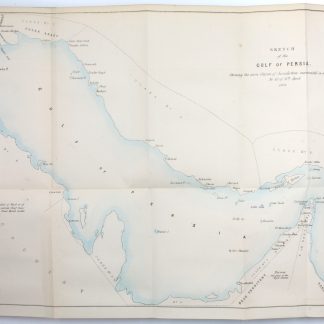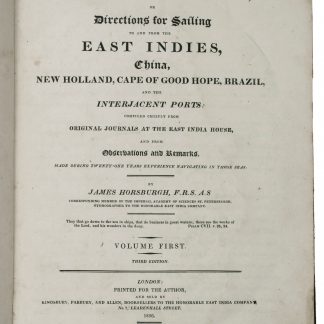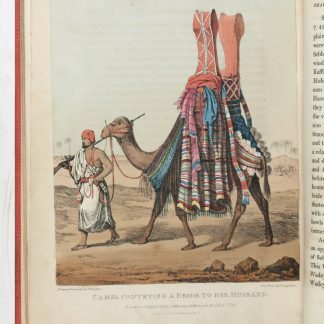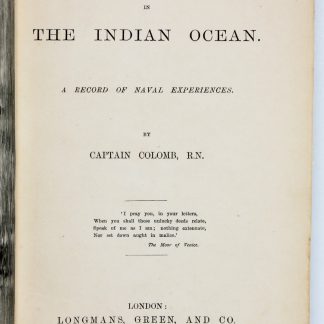"Said-bin-Khalifa, chief of Abouthabi, without any exception the finest male specimen of humanity I have ever seen"
Slave-Catching in the Indian Ocean. A record of naval experiences.
8vo. VIII, (4), 503, (1) pp. With 8 steel-engraved illustration plates including the frontispiece (the 5 signed ones engraved by Pearson), a folding map of the Indian Ocean, Red Sea and the Gulf, hand-coloured in outline (lithographed by Edward Weller), and one line of music notes in the text. 20th century half calf and marbled boards, tooled.
€ 4.500,00
First edition (and the only one until a 1968 facsimile) of this very detailed and well-illustrated account of a British naval campaign to suppress the East African slave trade in the years 1868-70, published only eight year after the end of the U.S. Civil War and the abolition of slavery there. Colomb describes many ports - in the Gulf in particular - rarely covered in such detail, including Abu Dhabi, Sharjah, Bahrain, and Dubai, where the author met Zayed bin Khalifa Al Nahyan (1835-1909), grandfather and namesake of the founder of the UAE, and Hasher bin Maktoum Al Maktoum (r. 1859-86), fourth ruler of Dubai.
Philip Colomb (1831-99) amassed a wide-ranging historical record from his voyage notes. He appears to have had a particular admiration for the Arabs of the Gulf coast, as seen, for example, in his description of a meeting with Zayed bin Khalifa: "We visited Said-bin-Khalifa, chief of Abouthabi, without any exception the finest male specimen of humanity I have ever seen. Either the artist or the photographer should visit these regions, and preserve to us types of that outward grandeur to which the race is capable of ascending, before we are all utterly subdued and toned down to the physique which becomes a white tie and a tail coat" (p. 160).
By contrast, Colomb was unimpressed with the ex-sultan of Muscat ("If I had not known he had murdered his father, his appearance would have made me think him capable of it"), but describes in much more favourable terms Hasher bin Maktoum: "The chief of Debay, who accompanied him to the ship, was his complete opposite. A little sturdy, pugnacious, open-faced blusterer, charmed to have it out with you by land or sea in a friendly way, but if that could not be, equally charmed to shake hands with you" (p. 161). His descriptions of Bahrain, Abu Dhabi, Dubai, and Sharjah are equally thorough. Abu Dhabi, Colomb tells us, "is a power in Gulf politics. Its chief can bring 4,000 fighting men into the field" (p. 160). A visit to Dubai includes a description of pearl fisheries, and on the topic of Bahrain, "Bahrein is so fruitful an island, that its sovereignty has caused many a fight in the Gulf, and no doubt with cause many more" (p. 154). Colomb paints a picture of political life in Bahrain and Sharjah, detailing coups and even a first-hand report of a political murder. He addresses as well tribal tensions among the "Joasmees, Benyas, Utawbees, and so on" of the Trucial Coast, and describes how "I always seemed to hear of the great Wahabee power of the interior" (p. 133f.).
The illustrations show some of the slave ships, individual and group portraits of enslaved persons encountered during the campaign, and views of ports where slave trading occurred. The map ("The slave trading waters of the Indian Ocean") shows the Indian Ocean, Arabian Sea, Red Sea and the Gulf, including Madagascar and the other islands.
In excellent condition.
Garrick, "Indian Ocean, post-exploration", in: Speake, Literature of travel and exploration (2003), pp. 608-610. Zeitschrift für Ethnologie 5 (1873), p. 117.


